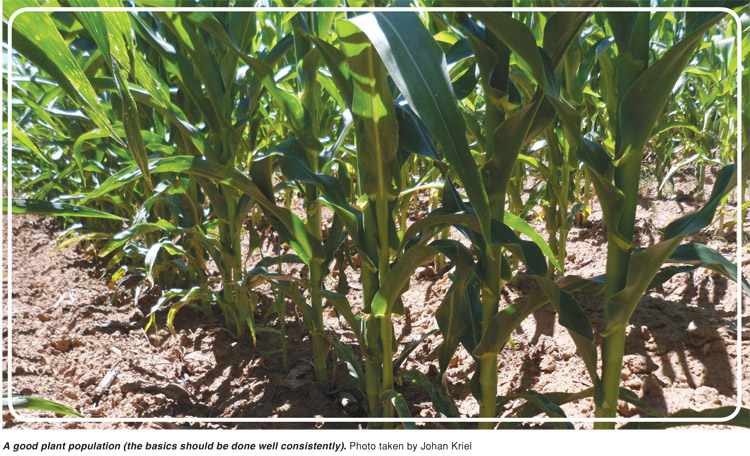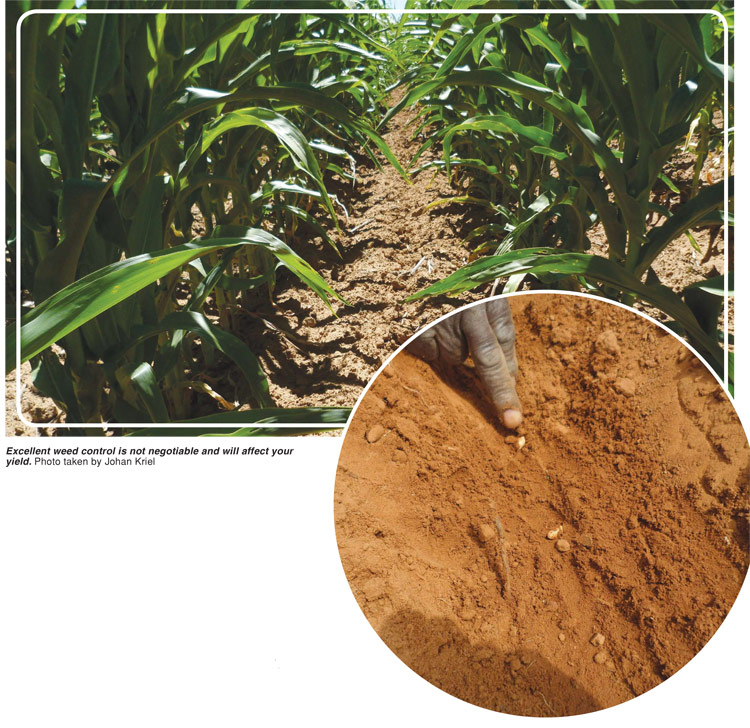June 2017

We read a lot about precision farming or as it is also described High Technology Farming (HTF) in agricultural magazines these days. This already gives one the idea that the reference is to something advanced. Precision farming refers to as advanced mechanical technology (as discussed in our previous article) combined with electronic or digital technology and global positioning systems (GPS) to provide advanced records.
Precision is a word derived from the word precise which is described as something being very exact and expressed in detail. In our farming environment one could relate this to what we do on the farm, to do it as precisely and in detail and as correctly as possible. Keep in mind the statement – to manage you must measure. To make decisions you need information which you get for instance from keeping proper records. The more accurate your information, the better decisions you will be able to make, and the better your management.
As stated in our previous article farmers in South Africa face but one major problem – to make a sustainable profit over a period of time. This is because of, for one, the so-called costprize squeeze. To exaggerate the position, our farmers also face the challenge of providing enough food at reasonable prices to a growing population. Thus, it is a continuous battle to keep expenditures under control and to increase income and to produce more.
Precision farming is not just a buzz word, it is a fact. Modern technologies which have been developed are for instance precision equipment, improved ways to capture and process data, global positioning systems (GPS), and radio frequency identification (RFID). To be able to survive as a farmer, big or small, you will eventually have to apply and use all the technology available to increase production per production unit, also referred to as vertical expansion. However, there are additional costs involved when applying the advanced technology and therefore it is critical to use the modern technology to it’s fullest to reap the advantages of it.
Advantages of applying precision farming will be for instance:
The aim of precision farming is to assist you to acquire more detailed, correct, exact, and timeously information quicker (to measure) from satellite images, and electronic devices (even your cell phone) on a much more regular basis than from manual records. This will then enable you to manage for instance the fertilisation, crop health program, water requirements, and harvesting of your crops on a much more advanced level (to manage). This presents you as farmers with opportunities to improve the production efficiency of every production unit on your farm.

However, a word of caution. Do not attempt to apply precision farming if you do not do the basics correctly already. As an example, someone has said – do not fertilise, just to fertilise. You must fertilise according to what the plant needs and what the soil provides. In the past, basic recipes were used for fertilising, then came the era of taking soil samples to determine the need for what fertiliser to use and how much. This still remains the basics to applying fertiliser. If you do not apply this basic action, precision farming is not going to be of any use. Precision techniques to improve your fertilisation ‘recipe’ still begins with the use of soil samples which is combined with additional information to improve your recipe to increase production. For instance, with satellite images problem areas in a specific land can be identified and the fertilisation (recipe) of that specific area within a land, be adapted and then applied using GPS on mechanical advanced applicators.
As far as record-keeping is concerned, the same applies. You must first be able to manage the basic records manually and to use it when taking decisions before commencing to precision farming. By means of precision farming so much more and accurate data is provided which is transformed electronically to information to be used when taking decisions.Should you not be able to use manual records properly, how are you going to use all the records provided by precision farming?
Should you wish to survive as a farmer, big or small, you will have to do all the basic activities correctly and then advance to precision farming to improve efficiency every year. To introduce precision farming will take time and needs to be done step by step, but it’s an essential tool you will have to apply sooner or later – the sooner the better.
Article submitted by Marius Greyling, Pula Imvula contributor. For more information, send an email to mariusg@mcgacc.co.za.
Publication: June 2017
Section: Pula/Imvula